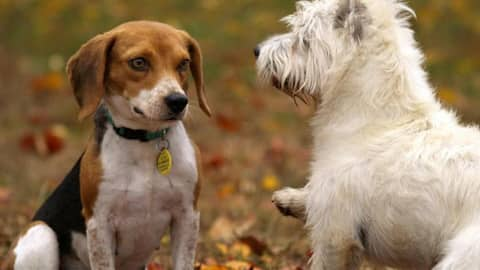The essential guide to caring for pets during summer
What's the story
As the summer months approach, it's crucial to take proactive measures to ensure the safety and well-being of your beloved pets. Rising temperatures coupled with humidity can create uncomfortable and challenging conditions, particularly in areas prone to power outages caused by summer storms. However, by implementing some simple strategies, you can help keep everyone cool and safe during heatwaves.
Hot cars
Never leave pets in parked cars
Never leave pets in a parked car, not even briefly or with the air conditioner on. Within minutes, temperatures could soar to dangerous levels, potentially reaching 40 degrees in just 10 minutes on a 29-degree day. Such conditions can cause irreversible health hazards for pets. Educate yourself on intervention techniques or immediately seek assistance if you encounter a pet trapped in a hot car.
Paw burn
Limit exercise on hot days
Exercise caution when exercising your pet, adjusting intensity and duration to match the temperature. On hot days, restrict activity to cooler times like early morning or evening. Take extra care with pets prone to issues with white ears, and short-nosed breeds susceptible to breathing difficulties. Opt for grassy surfaces instead of hot asphalt to prevent paw burns. Keep water handy to prevent dehydration.
Fresh water
Proper hydration and shade
Ensure clean, fresh water is readily available at all times. During heatwaves, add ice to the water if available. Ensure your pet has shade by opting for tree shades or tarps, which facilitate air circulation. Avoid using a doghouse as it traps heat and exacerbates discomfort. Providing these measures ensures your pet stays cool and protected from the sun's heat.
Symptoms
Heatstroke risks for pets
Extreme temperatures pose a risk of heatstroke in pets, with symptoms including heavy panting, glazed eyes, rapid heartbeat, and difficulty breathing. Additionally, animals, especially the very old, very young, overweight, are at heightened risk. Breeds with short muzzles like Boxers, Pugs, and Shih Tzus face increased difficulty breathing in extreme heat. Vigilance and prompt action are crucial in preventing heat-related illnesses in pets.
Ice cubes
First aid for heatstroke in pets
Move your pet to a shaded or air-conditioned area. Apply ice packs or cold towels to their head, neck, and chest, or gently run cool water over them. Offer small amounts of cool water or ice cubes for them to drink. Use cooling products available for pets, such as cooling mats, to regulate body temperature. It's imperative to seek immediate veterinary care.
Hair trim
Grooming
Regular grooming is crucial for pets, especially in warmer months. Brushing removes loose fur, preventing matting and promoting airflow near the skin. For long-haired pets, consider a trim to help them stay cool. However, avoid shaving down to the skin, as their fur provides insulation against both heat and cold. Proper grooming ensures your pet's comfort and well-being throughout the changing seasons.
